Jump To:
The Case For Natural Alternatives To Injectables
The Top 3 Herbal Allies For Ageless Beauty
The Natural Advantage
KEY TAKEAWAYS:
- Cosmetic injections are popular for reducing wrinkles but can be costly, temporary, and come with potential side effects.
- Natural herbs offer a holistic alternative by supporting the skin's health from within, rather than temporarily altering muscle activity.
- Aloe vera provides deep hydration and antioxidant protection, making it especially effective for dry, aging skin.
- Green tea helps shield skin from UV damage and oxidative stress, improving firmness and overall complexion.
- Gotu kola enhances collagen and moisture levels, with both ancient tradition and modern science backing its skin-rejuvenating effects.
It's perfectly natural to desire smooth, radiant skin that makes you feel confident and vibrant. The pursuit of ageless
beauty is not just about vanity; it's about embracing self-care and feeling comfortable and vital in your own skin. In
the modern world of cosmetic procedures, wrinkle-reducing injections have gained popularity as a way to reduce fine lines and achieve a more
youthful appearance. However, as interest in holistic wellness increases, many people are exploring
natural alternatives
that promote skin health and vitality without the invasiveness of injectable treatments. Let's delve into the world of
herbal skincare alternatives, which offer a more gentle approach to achieving ageless beauty.
THE CASE FOR NATURAL ALTERNATIVES TO INJECTABLES
In today's reality, we're bombarded with heavily edited images altered using Photoshop, filters, and AI enhancements,
that have us comparing our natural beauty to unrealistic standards. With the constant exposure to ads and images featuring
virtually flawless individuals, it's no surprise that millions of people have turned to cosmetic injections in order to feel
good in their skin. Unfortunately, these procedures are expensive, temporary, and come with a long list of potential side
effects.
Unlike injectables, which temporarily address wrinkles by affecting facial muscle movement or volume, herbs work to improve
the skin's underlying health, often boasting additional benefits such as boosting overall well-being and balance. Ingredients
like aloe vera, green tea, and gotu kola are renowned for their antioxidant-rich profiles, and have been traditionally used
for centuries to protect the skin from damage while enhancing its elasticity and glow.
Embracing herbal alternatives fosters a connection with nature and oneself by promoting personal care rituals centered on
self-love and wellness as integral aspects of daily life. Moreover, using herbs is generally more cost-effective and free
from the potential side effects that come with regular injectable treatments. By choosing herbs as a natural alternative to injectables
and fillers, individuals can pursue ageless beauty in harmony with their health, nurturing not just their skin but their
entire being.
THE TOP 3 HERBAL ALLIES FOR AGELESS BEAUTY
While beauty standards may have reached an all-time high level of unattainability, the quest for beautiful skin is as ancient
as human history itself. Across ages and cultures, people have sought ways to enhance their natural beauty. Let's delve into
the top 3 leading herbal alternatives to injectables, which have not only endured through the ages but continue to be supported by
scientific evidence for their effectiveness.
1. Aloe (Aloe vera)
Known as the "plant of immortality" by the ancient Egyptians,
aloe vera
was famously used by the Egyptian queens Cleopatra
and Nefertiti who were said to have incorporated it into their beauty regimens to maintain their legendary complexions [1].
The gel within the leaves of the aloe plant is packed with a rich composition of skin nourishing constituents. It contains
essential vitamins such as C and E [2], powerful antioxidants that help combat free radicals and protect skin health.
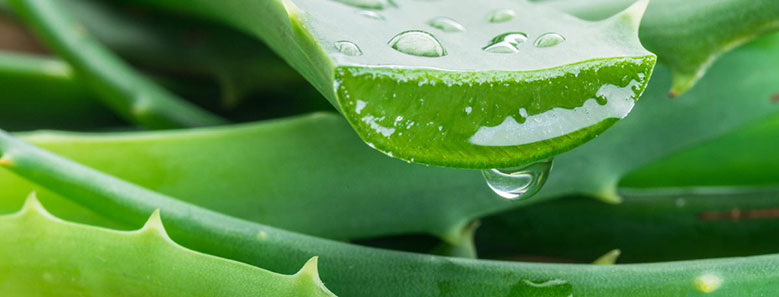
As we age, a number of factors such as thinning skin and slowing oil production cause our skin to lose hydration, increasing
the visibility of fine lines. Keeping the skin hydrated is a key component in combating these fine lines and maintaining skin
elasticity. Interestingly, aloe is an incredibly resilient plant that thrives in some of the driest desert regions on Earth.
In order to survive in these harsh climates, it has developed the remarkable ability to store water within its thick, fleshy
leaves. The gel-like substance that allows aloe to retain moisture for itself also works wonders on human skin, making it an
exceptional natural moisturizer. By providing deep hydration and forming a protective barrier, aloe vera gel can soothe and
replenish dry, thirsty skin, capitalizing on the plant's incredible water-storing capabilities.
HOW TO USE:
While the aloe gel can be used fresh and applied directly to the skin,
powdered aloe
made from dried and powdered leaves can
also be added to formulas for skin care products such as creams, lotions, and face masks to enhance their anti-wrinkle effects.
Aloe can also be consumed internally in juices or smoothies, offering a host of benefits, including enhanced whole-body
hydration.
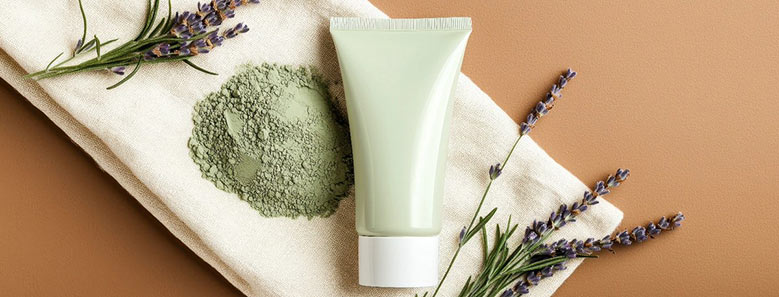
2. Green Tea (Camellia sinensis)
One of the most widely consumed beverages in the world, green tea is not just for drinking. It's also an herb that can be applied
topically for skincare benefits. Green tea has a long history of topical use for maintaining youthful-looking skin, especially in
Chinese and Japanese cultures. For centuries, women in these regions have utilized green tea in skincare routines to take advantage
of its antioxidant properties, which help protect the skin from damage and promote a healthy complexion. Japanese geishas, in
particular, were known to incorporate green tea into their beauty rituals, using it in baths and as part of skincare treatments to
maintain clear, smooth skin.
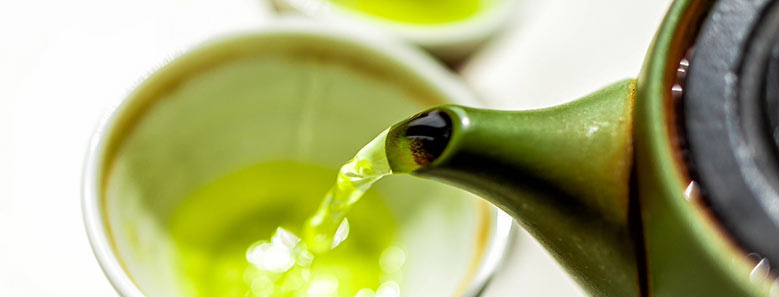
Rich in antioxidants, green tea helps combat oxidative stress, which contributes to skin aging [3]. Studies also show that green tea
extract can help protect the skin from UV induced aging known as UV photoaging [4]. Ultraviolet (UV) rays from the sun can penetrate
the skin and lead to various types of damage, contributing to premature aging. This includes the breakdown of collagen and elastin
fibers, which are essential for maintaining the skin's firmness and elasticity. Over time, UV exposure can cause wrinkles, fine lines,
hyperpigmentation, and a loss of skin tone and texture. By incorporating green tea into your skincare routine, you can harness its
protective and rejuvenating properties, promoting healthier, more resilient skin and ultimately enhancing your natural beauty.
HOW TO USE:
Green tea leaves
can be infused into oil for serums while the brewed tea from the leaves can be used as the water portion in creams
and lotions. Powdered green tea leaves can be added to face masks and scrubs.
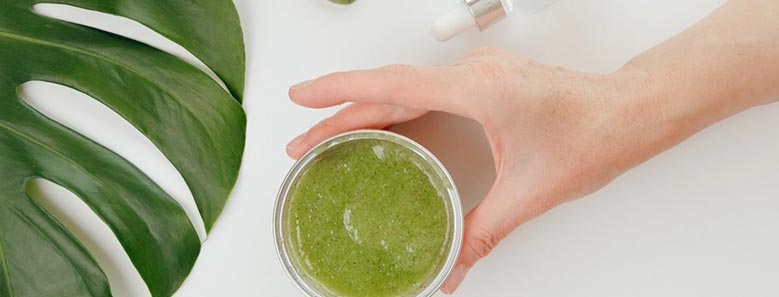
3. Gotu Kola (Centella asiatica)
Gotu kola is a low-growing herbaceous plant native to Asia. Widely celebrated in the herbal community,
gotu kola has been used for
centuries in Ayurvedic and Chinese medicine for a wide range of purposes including enhancing mental clarity, supporting meditation,
and promoting wound healing. Celebrated for its role in preserving youthful vitality, the herb is also known in China as the "miracle
elixir of life." Legendary Chinese herbalist Li Ching Yun, who reportedly lived for over 250 years, was said to have utilized gotu kola
as part of his herbal regimen, attributing his longevity and vitality to its rejuvenating effects. Even tigers may be privy to the
impressive healing capabilities of gotu kola as it has been reported that they will roll around in patches of the plant to support the
healing of wounds.
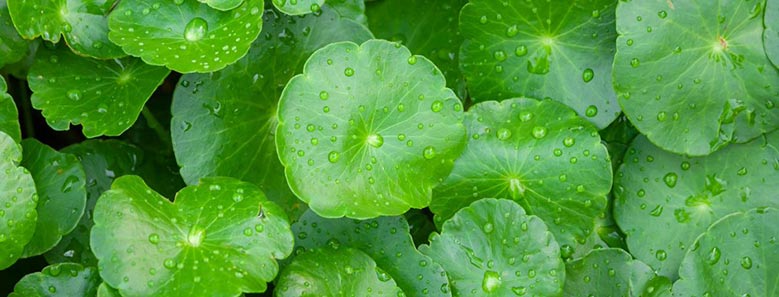
Today, studies confirm that the topical use of gotu kola significantly increases collagen levels and hydration in skin [5]. The historical
significance and modern acclaim of gotu kola highlight its effectiveness in skincare and overall wellness, making it a popular ingredient
in anti-aging formulations today.
HOW TO USE:
Gotu kola leaves can be infused into oil for face serums and creams or combined with other herbs or clay for rejuvenative face masks and
scrubs. Gotu kola can also be taken internally as a tea or tinctured in alcohol. The fresh plant leaves can be juiced or cooked into a
variety of dishes.
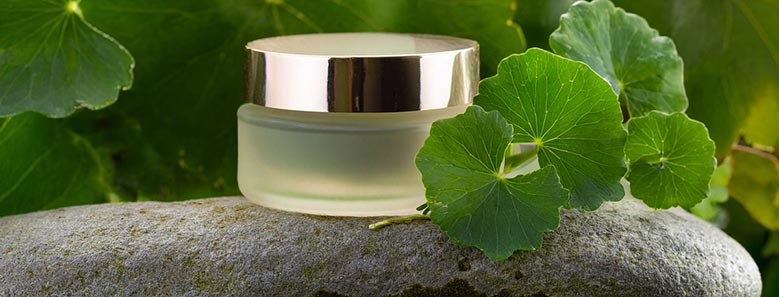
THE NATURAL ADVANTAGE
Choosing natural herbal alternatives to cosmetic procedures offers a range of benefits beyond skincare. Embracing a holistic approach fosters a deeper
connection to health and well-being, encouraging mindfulness and self-care.
While herbs may not deliver the instant results of injections,
regular application can yield radiant, healthy skin that reflects inner vitality and ageless beauty. Enjoy the journey to discovering
the power of herbal care and holistic beauty rituals!
Citations
1. Mehta, Indu History of aloe vera: A magical plant. IOSR Journal of Humanities and Social Science (IOSR-JHSS), 22(8), 21-24.
https://www.iosrjournals.org
2. Sinadinos, C. (2020). The Essential Guide to Western Botanical Medicine. Christa Sinadinos.
3. Vishnoi, H., Bodla, R. B., & Kant, R. (2018). Green tea (Camellia sinensis) and its antioxidant property: A review. International Journal of Pharmaceutical Sciences and Research, 9(5), 1723-1736.
https://doi.org/10.13040/IJPSR.0975-8232.9(5).1723-36
4. Abotorabi, Z., Khorashadizadeh, M., Arab, M., Hassanpour Fard, M., & Zarban, A. (2020). Jujube and green tea extracts protect human fibroblast cells against UVB-mediated photodamage and MMP-2 and MMP-9 production. Avicenna Journal of Phytomedicine, 10(3), 287-296.
https://doi.org/10.22038/ajp.2019.14078
5. Venesia, N. F., Fachrial, E., & Lister, I. N. E. (2020). Effectiveness Test of Centella Asiatica Extract on Improvement of Collagen and Hydration in Female White Rat (Rattus Norwegicus Wistar). American Scientific Research Journal for Engineering, Technology, and Sciences, 65(1), 98–107. Retrieved from
https://asrjetsjournal.org/index.php/American_Scientific_Journal/article/view/5658